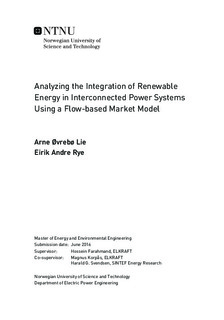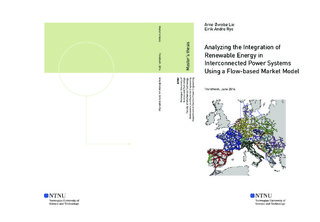| dc.description.abstract | As renewable energy is taking on a more pivotal role in power systems around the world, the implications of this development are all the more significant. The study of these issues requires accurate models with publicly available data, so that peer-reviewed analyses rooted in realistic preconditions may be performed.
This thesis addresses some of these issues in three studies using the PowerGAMA simulation tool. First, an existing PowerGAMA model is expanded, updated and validated to include most of the 2014 ENTSO-E power system. Comparison of the simulation results with actual data on cross-border flows and energy mix for 2014 shows acceptable correlation, and the model is able to reproduce the main characteristics of the power system, like reservoir handling, hydro pump behavior and seasonal variations in cross-border flows. Two case studies are performed to illustrate the model s application and limitations when studying large-scale integration of renewable energy.
The first case study investigates a 2030 scenario for the Moroccan power system with increased renewable generation capacity and demand in order to identify challenges that need to be addressed. Particular emphasis is put on a cost-benefit analysis comparing investments in storage capabilities for concentrated solar power and grid reinforcements. Our results indicate that large investments in electric infrastructure is needed to accommodate the renewable commitment and demand increase. Furthermore, 16 branchinvestments can be the preferable investment strategy for Morocco, with an annual cost reduction of 279 M .
The second case study investigates how different renewable technologies affect the utilization of existing pumped hydro plants in the Spanish power system. The approach is able to reproduce the actual hydro characteristics and ensures reasonable reservoir handling. Three scenario sare investigated, all doubling the current renewable energy output. Our results indicate that an increase in renewable generation increases the utilization of pumped hydro storage. For the scenarios with added wind and solar, and only added wind, the utilization is increased by around 150 %. The largest increase is observed in the solar scenario, at 189 %,due to a larger price reduction during solar hours.
In conclusion, the PowerGAMA model gives a reasonable picture of reality and is suited for future analysis, to which some suggestions are presented. | |

